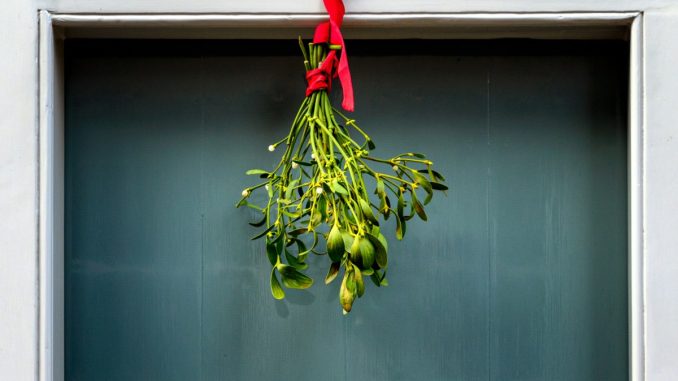
Hanging mistletoe during the holiday season is a beloved tradition steeped in mystery, romance and a touch of superstition. While today it’s most commonly associated with sharing a kiss, mistletoe’s origins as a symbolic and mystical plant date back centuries, blending mythology, folklore, and cultural customs.
Ancient roots and sacred symbolism
Mistletoe’s reputation as a plant of mystery predates its holiday charm. Ancient Druids in Europe held mistletoe in high regard, particularly when it grew on oak trees, which were considered sacred. The Druids believed mistletoe possessed healing properties and could ward off evil spirits. Harvested with elaborate rituals, it was used in ceremonies to promote fertility, peace and protection.
Mistletoe’s evergreen nature made it a symbol of vitality and life during the winter months. For ancient cultures, this resilience was seen as a magical quality in a season when most plants were dormant.
In Norse mythology, mistletoe plays a significant role in the story of Balder, a beloved god. According to legend, Balder’s mother, Frigg, made every plant, stone and weapon promise not to harm her son—except for mistletoe, which she overlooked.
The trickster god Loki crafted an arrow from mistletoe, leading to Balder’s death. Overcome with grief, Frigg declared mistletoe a symbol of love and vowed that anyone standing beneath it would receive her blessing in the form of a kiss.
From Pagan rites to Christian traditions
As Christianity spread across Europe, many pagan customs were reinterpreted to align with the new faith and mistletoe was no exception. Its association with fertility and renewal was adapted into Christmas celebrations, where it became a festive decoration and a symbol of goodwill.
The practice of kissing under the mistletoe likely emerged in 18th-century England, during a time when the plant was incorporated into holiday gatherings. Early accounts describe mistletoe being hung in doorways or ceilings and a kiss beneath it was considered a gesture of romance and goodwill.
The tradition of kissing under the mistletoe transformed into a charming custom, blending Victorian ideals of romance with earlier pagan associations of fertility.
Superstition and etiquette
While the custom of mistletoe kisses may seem lighthearted, it carries its own set of superstitions. In some regions, refusing a kiss under the mistletoe was thought to bring bad luck. Failing to remove a berry from the sprig after each kiss was said to invite misfortune. Once all the berries were plucked, the kissing was supposed to end.
Mistletoe was also believed to protect homes from lightning, witches and evil spirits. Hung year-round, it served as a talisman of safety and good fortune.
Modern interpretations
Today, mistletoe is primarily viewed as a festive holiday decoration, its mystical past largely forgotten. Its enduring presence in Christmas celebrations reminds us of its rich history and evolving symbolism.
Mistletoe has a unique ability to connect us to ancient traditions while remaining a symbol of joy and love. It’s a tradition that has stood the test of time.
Whether embraced for its romantic allure or its folkloric charm, mistletoe continues to hold a special place in holiday celebrations worldwide.

